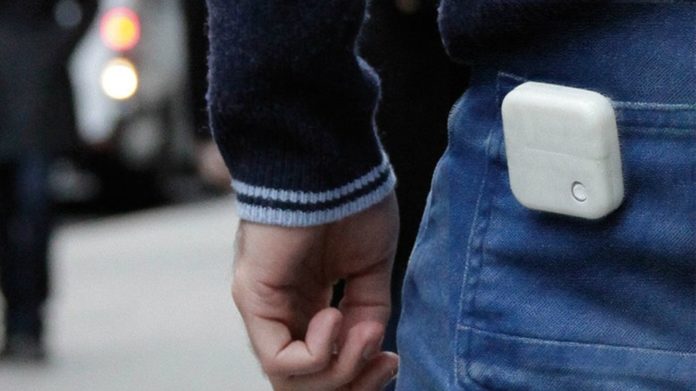A fart-tracking Kickstarter wants you to stop cutting the cheese

Are you tired of constantly cutting the cheese? Unsurprisingly, there’s an app for this.
A little device called the CH4 is named after the chemical compound CH4, or methane, which is found in natural gas. Har har.
Funding for the fart-tracking wearable is underway on Kickstarter, where a pledge of $120 will get you one of these non-invasive little guys.
Brazilian graphic designer and wearables enthusiast Rodrigo Narciso is the brain behind the tiny 3D-printed tracker. He developed the idea for his Master’s thesis in NYU’s Interactive Telecommunications Program. The concept is simple: Correlate how much you fart to what you’re eating.
“People are divided. Some love it and some think it’s just a joke/parody,” he told Mashable.
Place the square in your back pocket or attach it to your belt and go about your day. The sensor will detect each time you fart and record it on what resembles a car’s gas gauge. Then, on the associated app, enter your daily food intake; the CH4 will figure out which foods make you extra gassy, and can thus be avoided.

Image: I Want CH4
Flatus occurs mainly when we swallow small amounts of air while eating or drinking, and said food is then broken down into certain gases. This takes place in the digestive tract.
You can blame methane and hydrogen sulfide for the less-than-pleasant odor. Bacteria overgrowth can also cause farting. And c’mon, everybody farts — it’s normal to pass gas between 13 and 21 times a day.
You know that childhood rhyme about beans being the magical fruit? Well, it’s true. Beans, vegetables like cauliflower and broccoli, and sodas can make you gassy, according to the National Institute of Diabetes and Digestive and Kidney Diseases.
The tracker is still in its early stages; so far, a prototype includes a sensor board and uses an algorithm that detects gas. If you back the wearable on Kickstarter, you can expect a delivery around March 2016.
The crowdfunding campaign closes on Monday at 11:59 p.m., but has barely scratched surface of its $180,000 goal. Narciso hasn’t decided whether he’s going to run another campaign to fund the CH4’s production; he says he used Kickstarter to learn about its market value and consumer interest. So far, some in the medical field who find the idea useful have contacted Narciso about the idea.
New York gastroenterologist Shawn Khodadadian told Mashable that while it would be nice in theory for people to know what foods are not easily digestible, it’s still unclear how the device can differentiate between which foods cause flatulence, especially when eaten in close proximity.
Instead, Khodadadian recommends that you avoid chewing gum or drinking carbonated beverages and limit consumption of sweeteners. For some, excessive gas can be a result of whole grains and dairy, too. You can also try a hydrogen breathing test if excessive flatulence is a problem.
So while the CH4 may be far from reality, its presence proves once again that wearables will go far beyond the wrist.
Have something to add to this story? Share it in the comments.
